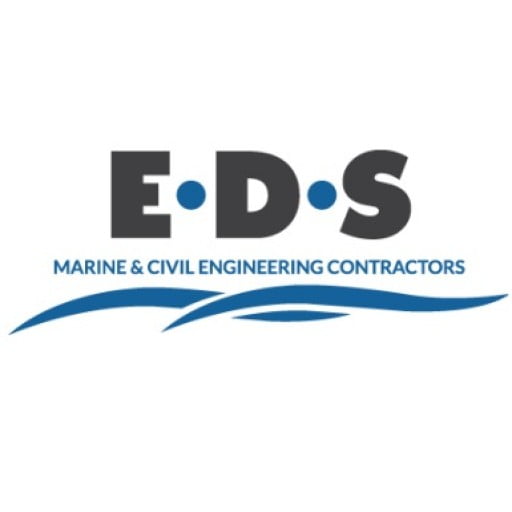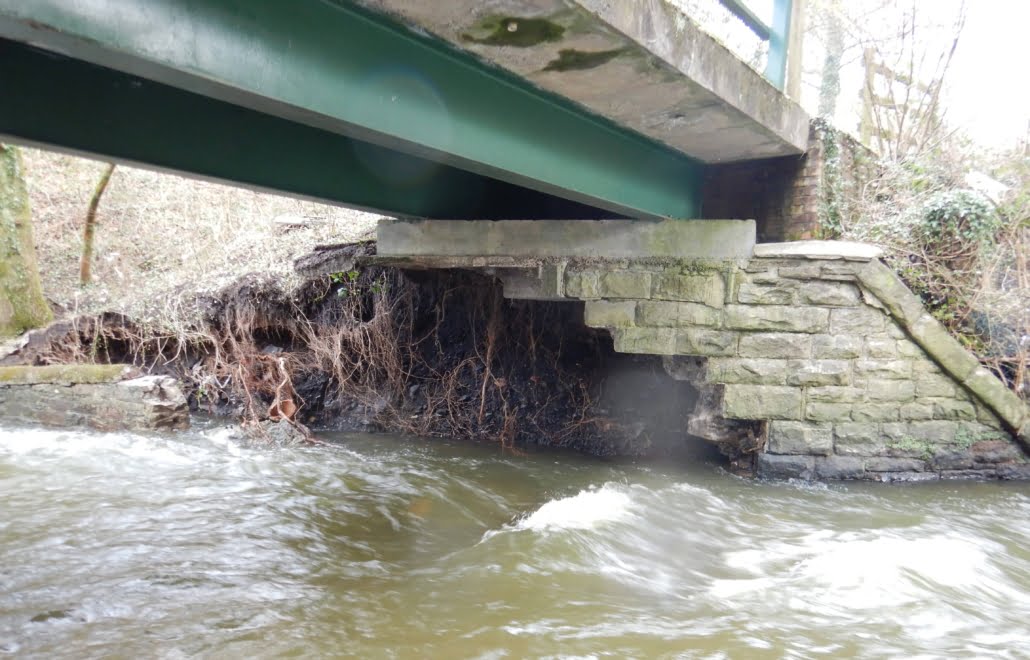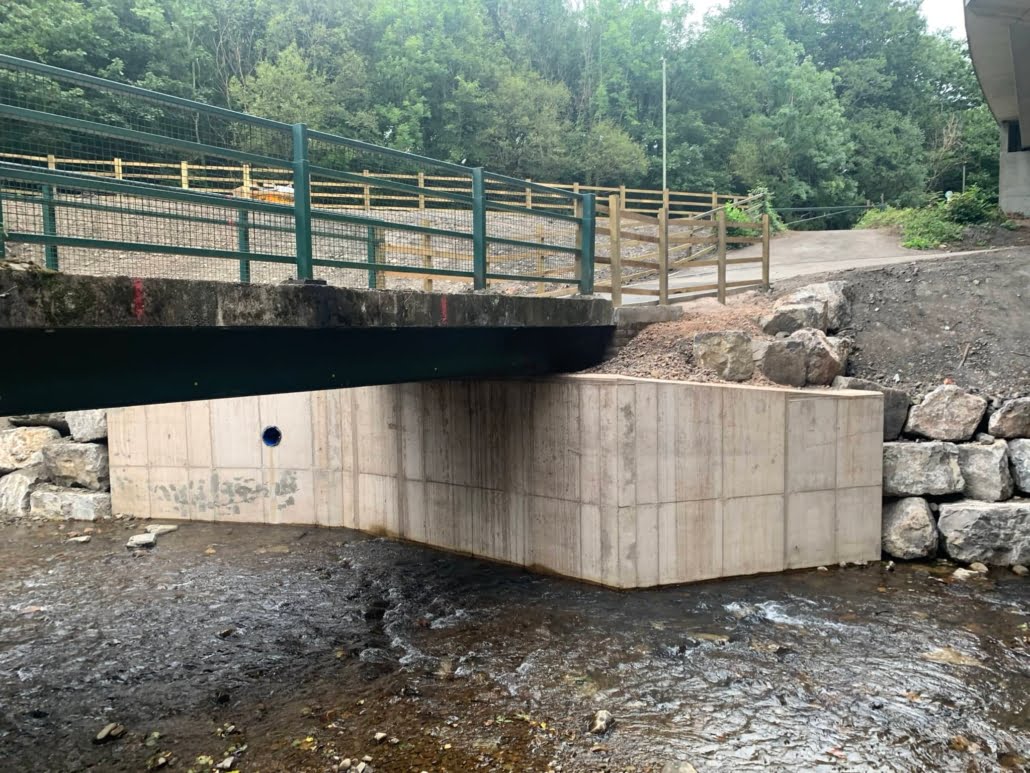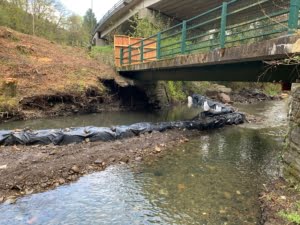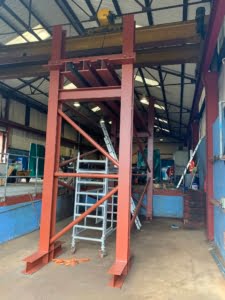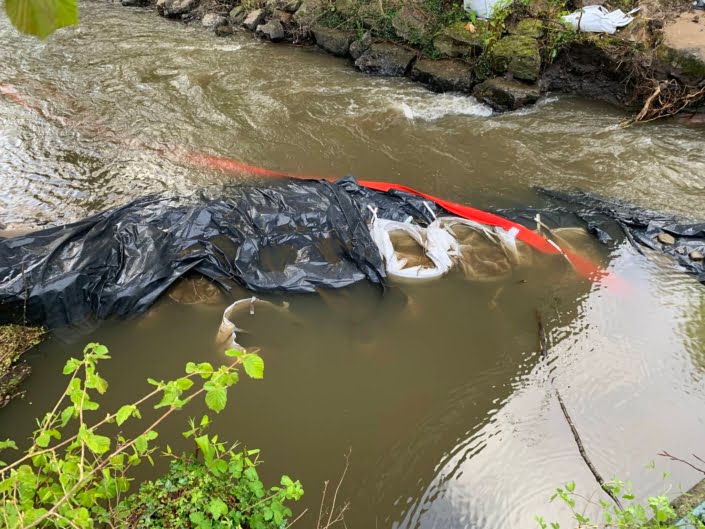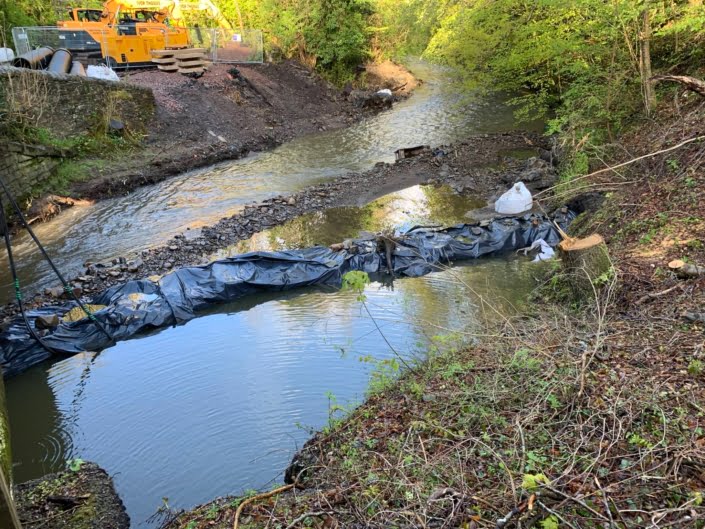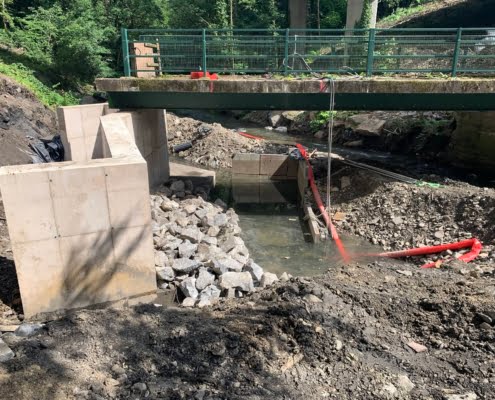National Cycle Route saved by innovative bridge abutment replacement
Full Moon Bridge is a single-span pedestrian bridge in Crosskeys, South Wales that also carries Route 47 of the National Cycle Network across the River Sirhowy. The bridge was designated for full replacement following extensive flood damage sustained to the Victorian stone masonry abutment in 2020.
Damage left the bridge unsupported for over 50% of the abutment length and the bridge was immediately closed to members of the public for safety reasons.
Through discussions with the client, EDS proposed that the existing abutment could be replaced in place by propping the bridge from a temporary structure positioned beneath the bridge deck in the existing river channel. The solution had many challenges to overcome, including:
- Design and fabrication of a temporary steelwork support structure, capable of carrying the weight of the bridge and resisting erosion and impact damage from debris in river flood conditions.
- Accommodating a temporary support structure in a narrow river channel and diverting river flows around the structure to dewater the working area for construction of a new reinforced concrete abutment.
- Working around a structure with reduced support and managing risks to operatives during installation of the temporary steelwork support structure.
The solution:
- EDS and temporary works sub-consultant, Pebble Engineering Ltd designed and manufactured a temporary steelwork; the manufacture was completed at our in-house fabrication shop.
- A trial erection of the steelwork support structure was undertaken to ensure that the structure could be safely installed in the river channel (once the foundations had been placed) by operatives working on either side of the bridge. The objective was to eliminate or reduce the requirement to work beneath the bridge until the support lost by the abutment could be reinstated.
- A survey control system was established on site to further reduce risks to operatives working around the bridge and regular movement monitoring was carried out during the temporary and permanent works phases
- Construction commenced in April 2021 and, with low river flows, works proceeded to install pollution control measures and a temporary river bund to divert the river and dewater the working area to allow placement of the precast concrete foundations.
- Unfortunately, flooding experienced in May 2021 resulted in overtopping and damage being sustained to the river bund. When levels receded, it was apparent that the river bund was no longer sufficiently watertight and that the structural integrity of the upper level had been affected.
- The immediate project priority was to secure the structural stability of the bridge due to the risk of losing the remaining support provided by the failed abutment in further floods.
- EDS developed alternative options for placing the precast concrete foundations as the bunded area could no longer be de watered and proposed that this could be achieved as an underwater operation, taking advantage of our own in-house commercial diving capabilities.
- We made use of the remaining river bund to effectively create benign conditions suitable for diving works. A cofferdam was lifted into place in two sections and positioned around the locations for the precast concrete pad foundations on the excavated riverbed and our divers cast a 200mm thick concrete slab underwater beneath the bridge using a 32m boom pump to tremie the concrete into place. To control the placement of concrete in nil visibility to the required levels, the diver used a screed rail system that had been pre-installed into the cofferdam.
- After curing of the foundation, the precast concrete slabs were then set down and resin-fixed to it.
- With a solid foundation, the steelwork was lifted into position, secured, and aligned. Lifting operations were carried out by excavators and support cross beams were positioned beneath the existing bridge beams on top of hydraulic jacks and secured with Lindapter clamps.
- With the bridge supported and raised off the damaged abutment, demolition works were carried out under close monitoring of the bridge and with the hydraulic jacks adjusted as required
- Works progressed quickly from this point with steel fixing, formwork and concreting activities to cast the reinforced concrete abutment base slab (including toe beam), progressing to the stem wall. In contrast to traditional bridge construction where the abutments are first built then the superstructure elements installed, the abutment stem had to be cast up to the original level of the bearings. The bridge deck was then lowered onto the new concrete abutment.
- Activities to complete the project involved construction of the approach retaining structure, backfilling and compaction, rock armour scour protection to the embankments and rip rap to the abutment, footpath reinstatement, safety fence installation and landscaping.
EDS’ innovative approach to securing stability not only saved the bridge from collapse but eliminated the requirement to remove the bridge deck for the abutment reconstruction. By using underwater (diving) techniques to react to site conditions, the impact on the project due to poor weather was reduced, and the bridge reopened for public use again in August 2021.
